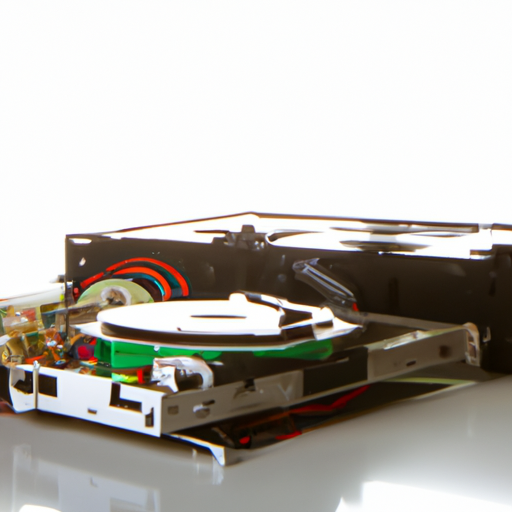What Kind of Product is the Video and Audio Dedicated Service Engine?
I. Introduction
In an era where digital content consumption is at an all-time high, the demand for high-quality video and audio services has never been greater. Enter the Video and Audio Dedicated Service Engine (VADSE), a specialized technology designed to handle the unique challenges of processing and delivering multimedia content. This article aims to explore what VADSEs are, their key features, applications, benefits, challenges, and their role in shaping the future of media consumption.
II. Overview of Video and Audio Dedicated Service Engines
A. Explanation of Dedicated Service Engines
A Video and Audio Dedicated Service Engine is a specialized system designed to process, encode, decode, and deliver audio and video content efficiently. Unlike general-purpose engines, which are built to handle a wide range of tasks, dedicated service engines focus solely on multimedia processing. This specialization allows them to optimize performance, reduce latency, and enhance the overall quality of service.
B. Historical Context
The evolution of video and audio technology has been rapid, driven by advancements in internet speeds, storage capabilities, and consumer demand for high-quality content. As streaming services gained popularity in the early 2000s, the need for dedicated solutions became apparent. The emergence of dedicated service engines marked a significant milestone in this evolution, providing the necessary infrastructure to support the growing demand for real-time media processing.
III. Key Features of Video and Audio Dedicated Service Engines
A. High-Performance Processing
One of the standout features of VADSEs is their ability to perform real-time encoding and decoding of audio and video streams. This capability is crucial for applications like live streaming, where delays can significantly impact user experience. VADSEs are designed to minimize latency while maximizing throughput, ensuring that content is delivered smoothly and efficiently.
B. Scalability
Scalability is another critical feature of dedicated service engines. They can handle varying workloads, making them suitable for both small-scale operations and large-scale deployments. Whether deployed in the cloud or on-premises, VADSEs can adapt to changing demands, allowing businesses to scale their operations without compromising performance.
C. Compatibility and Integration
In a world where multiple formats and protocols coexist, compatibility is essential. VADSEs support a wide range of audio and video formats, ensuring that they can integrate seamlessly with existing systems and workflows. This flexibility allows businesses to leverage their current infrastructure while enhancing their multimedia capabilities.
IV. Applications of Video and Audio Dedicated Service Engines
A. Streaming Services
VADSEs play a pivotal role in the success of streaming services like Netflix, YouTube, and Twitch. They enable live streaming and on-demand content delivery, ensuring that users receive high-quality audio and video without interruptions. The ability to handle large volumes of concurrent users is essential for these platforms, and dedicated service engines provide the necessary support.
B. Broadcasting
In the broadcasting industry, VADSEs are integral to television and radio operations. They facilitate the encoding and transmission of live broadcasts, ensuring that viewers receive high-quality content in real-time. This technology is particularly important for news and sports coverage, where timely delivery is crucial.
C. Video Conferencing and Collaboration Tools
The rise of remote work and online education has increased the demand for video conferencing and collaboration tools. VADSEs enhance the quality of these platforms, providing clear audio and video for seamless communication. Applications like Zoom and Microsoft Teams utilize dedicated service engines to ensure that users can connect effectively, regardless of their location.
D. Gaming and Interactive Media
In the gaming industry, VADSEs enhance user experience by providing high-quality audio and video in real-time. They are essential for online gaming, where latency can affect gameplay. Additionally, dedicated service engines play a role in virtual reality (VR) and augmented reality (AR) applications, delivering immersive experiences that require high-performance processing.
V. Benefits of Using Video and Audio Dedicated Service Engines
A. Improved Quality of Service
One of the primary benefits of using VADSEs is the improved quality of service they provide. With enhanced audio and video quality, users enjoy a more engaging experience. Consistency in performance is also a significant advantage, as dedicated service engines are designed to handle demanding workloads without compromising quality.
B. Cost-Effectiveness
While the initial investment in dedicated service engines may be higher than general-purpose solutions, the long-term savings can be substantial. By reducing operational costs and increasing efficiency, businesses can achieve a better return on investment. The ability to scale operations without significant additional costs further enhances the cost-effectiveness of VADSEs.
C. Increased User Engagement
High-quality audio and video lead to better user experiences, which in turn increases user engagement. When users are satisfied with the quality of content, they are more likely to return, leading to higher retention rates. In a competitive market, providing a superior user experience is essential for success.
VI. Challenges and Considerations
A. Technical Challenges
Implementing a Video and Audio Dedicated Service Engine can be complex. Organizations may face technical challenges, including the need for specialized knowledge and skills to manage and maintain these systems. Additionally, the integration of dedicated service engines into existing workflows may require significant adjustments.
B. Market Competition
The market for video and audio services is highly competitive, with numerous players offering various solutions. Differentiating factors for dedicated service engines include performance, scalability, and compatibility. Businesses must carefully evaluate their options to choose the right solution for their needs.
C. Future Trends
As technology continues to evolve, so too will the landscape of video and audio services. Emerging technologies such as artificial intelligence (AI) and 5G are expected to impact the development of dedicated service engines. AI can enhance content delivery and personalization, while 5G will enable faster and more reliable streaming experiences.
VII. Conclusion
In conclusion, Video and Audio Dedicated Service Engines are essential components of modern multimedia processing. Their ability to deliver high-quality audio and video, coupled with scalability and compatibility, makes them invaluable for a wide range of applications, from streaming services to broadcasting and gaming. As the demand for high-quality content continues to grow, businesses and developers should consider integrating dedicated service engines into their strategies to stay competitive in the evolving digital landscape.
VIII. References
1. "The Evolution of Streaming Technology" - TechCrunch
2. "Understanding Video Encoding and Decoding" - Streaming Media Magazine
3. "The Future of Video Conferencing: Trends and Predictions" - Forbes
4. "How AI is Transforming Media and Entertainment" - Harvard Business Review
5. "5G and Its Impact on Streaming Services" - Wired
This blog post provides a comprehensive overview of Video and Audio Dedicated Service Engines, highlighting their significance in today's digital landscape and their potential to shape the future of media consumption.






